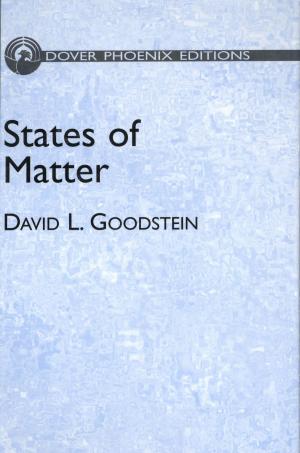| Author: | Robert William Soutas-Little | ISBN: | 9780486150079 |
| Publisher: | Dover Publications | Publication: | April 26, 2012 |
| Imprint: | Dover Publications | Language: | English |
| Author: | Robert William Soutas-Little |
| ISBN: | 9780486150079 |
| Publisher: | Dover Publications |
| Publication: | April 26, 2012 |
| Imprint: | Dover Publications |
| Language: | English |
According to the author, elasticity may be viewed in many ways. For some, it is a dusty, classical subject . . . to others it is the paradise of mathematics." But, he concludes, the subject of elasticity is really "an entity itself," a unified subject deserving comprehensive treatment. He gives elasticity that full treatment in this valuable and instructive text. In his preface, Soutas-Little offers a brief survey of the development of the theory of elasticity, the major mathematical formulation of which was developed in the 19th century after the first concept was proposed by Robert Hooke in 1678. The theory was further refined in the 20th century as a means of solving the equations presented earlier.
The book is divided into three major sections. The first section presents a review of mathematical notation and continuum mechanics, covering vectors and tensors, kinematics, stress, basic equations of continuum mechanics, and linear elasticity. The second section, on two-dimensional elasticity, treats the general theory of plane elasticity, problems in Cartesian coordinates, problems in polar coordinates, complex variable solutions, finite difference and finite element methods, and energy theorems and variational techniques. Section three discusses three-dimensional problems, and is devoted to Saint Venant torsion and bending theory, the Navier equation and the Galerkin vector, and the Papkovich-Neuber solution.
Numerous illustrative figures and tables appear throughout the book, and valuable reference material is provided in the appendices on eigenfunction analysis, trigonometric functions, Fourier transforms, inverse transforms, complex variable formulae, Hankel transforms, and Bessel and Legendre functions.
Instructors will find this an ideal text for a two-course sequence in elasticity; they can also use it as a basic introduction to the subject by selecting appropriate sections of each part.
According to the author, elasticity may be viewed in many ways. For some, it is a dusty, classical subject . . . to others it is the paradise of mathematics." But, he concludes, the subject of elasticity is really "an entity itself," a unified subject deserving comprehensive treatment. He gives elasticity that full treatment in this valuable and instructive text. In his preface, Soutas-Little offers a brief survey of the development of the theory of elasticity, the major mathematical formulation of which was developed in the 19th century after the first concept was proposed by Robert Hooke in 1678. The theory was further refined in the 20th century as a means of solving the equations presented earlier.
The book is divided into three major sections. The first section presents a review of mathematical notation and continuum mechanics, covering vectors and tensors, kinematics, stress, basic equations of continuum mechanics, and linear elasticity. The second section, on two-dimensional elasticity, treats the general theory of plane elasticity, problems in Cartesian coordinates, problems in polar coordinates, complex variable solutions, finite difference and finite element methods, and energy theorems and variational techniques. Section three discusses three-dimensional problems, and is devoted to Saint Venant torsion and bending theory, the Navier equation and the Galerkin vector, and the Papkovich-Neuber solution.
Numerous illustrative figures and tables appear throughout the book, and valuable reference material is provided in the appendices on eigenfunction analysis, trigonometric functions, Fourier transforms, inverse transforms, complex variable formulae, Hankel transforms, and Bessel and Legendre functions.
Instructors will find this an ideal text for a two-course sequence in elasticity; they can also use it as a basic introduction to the subject by selecting appropriate sections of each part.















